No products in the cart.
Pets are more than just companions—they’re family. Whether you live alone or with loved ones, are a young adult, retired, or anywhere in between, pets hold a special place in our hearts. We want the best for them, from choosing the healthiest food and safest toys to keeping them clean and scheduling regular vet visits. However, one factor often overlooked in our quest to care for them is the relationship between indoor air quality and pets.
What kind of impact does air quality have on their health? Does it even affect them?
Many pet owners might not consider the connection, which isn't surprising given how little attention airborne particles like mold spores and other indoor contaminants receive. However, as more people become aware of the effects that poor indoor environments can have on their own health, it’s important to extend that awareness to pets. After all, if poor air quality can harm humans, it stands to reason they can impact our furry friends as well!
Does Indoor Air Quality Impact Pets?
Poor indoor air quality can absolutely impact your furry family members, just as it can negatively impact humans.
The Relationship Between Indoor Air Quality and Pets

When we think about indoor air quality, it’s easy to focus on how pollutants affect human health. We’re kind of the main characters of our own lives, right? That focus should also shift to include pets because our homes are their entire world!
They spend almost all their day, if not their entire lives, living inside your home and breathing that indoor air. It makes sense that it plays a role in their well-being as well. They also breathe more than we do. In general, all dogs and cats have a breathing rate of between 15-30 breaths every minute. That equals out to an average of 32,400 a day, which results in a lot of air entering their bodies. In comparison, humans breathe an average of 20,000 times per day. Like humans, though, air is the greatest route of exposure they face.
They’re also low to the ground, where a lot of exposure to polluted air happens. Particles like bacteria and mold spores settle in our dust. If you look around, dust settles on horizontal surfaces throughout the home. What’s the biggest horizontal surface for it to settle on? Your floor! When the contaminant-filled dust on the floor is disturbed, it will become airborne and can enter your pet’s body as they breathe.
The ironic aspect of this situation is that pets may also be more sensitive to air quality issues than we are. Take dogs as an example. With 300 million receptors compared to a human's 5 million, dogs have an astonishing sense of smell—estimated to be between 100,000 and 100 million times more sensitive than ours. So, while they may know there’s something harmful in the air they’re breathing, they can’t alert you to a problem. That leaves them stuck breathing in potentially harmful air all day and night.
Why Indoor Air Quality is a Building Problem
One issue making poor air quality an increasing issue is modern building practices pushing for net-zero energy efficiency. This method means that there’s minimal airflow between our indoor and outdoor environments. Most of the contaminants that make their way inside the building will remain there until they’re actively removed. With that in mind, it makes sense that the EPA found levels of over a dozen contaminants to be 2 to 5 times higher inside homes than outside, regardless of whether the homes were located in rural or highly industrial areas.
Picture your home as a snow globe, except the snowflakes are those invisible contaminants. As your pet (and you!) go about the day, they’re sleeping, wandering around, eating, and playing in a dome full of particle-filled air. With every breath they take, more of those particles enter the body. If there are high levels of contaminants, that increases the exposure they’ll face throughout the day. This sparks a prolonged immune system response, which may eventually lead to malfunction, allowing autoimmune symptoms and conditions to occur.
The Impact of Poor Air Quality and Pets

So, how bad can the exposure be for them? Unfortunately, we don’t yet have enough research to know the extent of the interaction between poor indoor air quality and pets. It’s the exact situation we’re finding for the interaction between poor indoor air quality and humans. That being said, the studies that have been conducted provide enough evidence to know this: poor air quality is not beneficial for our furry family members.
One study revealed that dogs subjected to particulate matter (PM2.5) had 5 to 10 times higher levels of superoxide dismutase—an indicator of oxidative stress. High oxidative stress contributes to the development of health issues such as cancer, disease, and brain damage, so it is absolutely not a condition we want our pets to develop. This underscores that air pollution induces a great deal of stress in pets, possibly more than in their human counterparts.
Additionally, studies show that indoor air pollution makes dogs 60% more likely to develop lung cancer and an increased risk of carcinoma, bladder cancer, mesothelioma, and nasal cancer. Another study of over 700 dogs found that pets living in homes with pesticides had a 70% higher risk of developing canine malignant lymphoma. Yet another study found that dogs exposed to Mexico City’s pollution showed increased inflammation and amyloid plaques in their brains, a condition linked to neurological damage.
Studies have also shown that cats are at risk. When exposed to particulate matter and smoke from human activities, cats can develop feline asthma, chronic bronchitis, respiratory disease, and lung cancer.
And again, this is only the information we know so far. The impact could be even greater for smaller animals like rabbits or reptiles.
Mold: A Silent Threat to Pets
Let’s take a quick look at an example of an indoor contaminant that can impact your indoor air quality and pets. Unlike outdoor environments where mold spores disperse, indoor mold colonies release spores, fragments, and potentially mycotoxins into a confined space. Pets, especially dogs and cats, are highly susceptible to these particles.
Mycotoxins, which are rapidly absorbed, are particularly dangerous. The constant exposure to mold and other airborne toxins exacerbates the risk of developing allergic reactions, respiratory infections, and chronic diseases. These toxins can also lead to liver damage, immune suppression, and even cancer.
Symptoms to Look Out For

One of the key ways to protect pets from poor indoor air quality is to recognize the signs of exposure. The sooner you notice a problem, the more quickly you can jump into figuring out what the issue may be.
Symptoms of pets exposed to indoor air quality include:
- Respiratory Problems: Coughing, sneezing, labored breathing, or nasal discharge are often the first signs of exposure to poor air quality and pets. Prolonged exposure can lead to chronic bronchitis or worsening asthma.
- Eye Irritation: Pets may develop red, watery eyes or paw at their eyes due to exposure to volatile organic compounds (VOCs) or other airborne pollutants.
- Skin Irritation and Allergies: Repeated exposure to mold spores, dust mites, or chemicals in the air can lead to itchy skin, excessive scratching, or rashes in pets, especially those with sensitive skin or pre-existing conditions(
- Behavioral Changes: Pets may become lethargic, have decreased appetite, or display unusual behavior due to discomfort from poor air quality, especially when exposed to toxic substances like carbon monoxide or high levels of indoor pollutants.
- Gastrointestinal Symptoms: Vomiting and diarrhea can occur in pets exposed to airborne toxins or inhaled particles irritating the gastrointestinal system.
- Severe Health Issues: Prolonged exposure can lead to more serious conditions, including pneumonia, immune system suppression, and even cancer in severe cases.
If any of these pop up, find a vet and search for answers. Indoor air quality isn’t on the top list of diagnosis for both doctors and veterinarians, so it may be up to you to bring it to the table as a potential issue. A good starting point is to invest in an air quality monitoring system to determine what’s in your life and conduct an at-home test like The Dust Test. This can alert you to any potential hidden issues within the home. Also, look thoroughly for visible problems such as water damage or microbial growth. If you find anything, jump into fixing it ASAP.
Check out this video for even more information!
Creating a Safe Environment For Indoor Air Quality and Pets
The best way to protect your pets is to create a safe environment for them to live in! In addition to choosing the best food, supplements, toys, and care, safe indoor air quality is a giant aspect of keeping them happy and healthy.
Luckily, there are many things you can do to improve your indoor air quality and ensure it supports the health of your pets. Here are some steps you can take to improve the relationship between indoor air quality and pets in your home.
Improve Indoor Air Quality By:
Focusing on eliminating particles from the air.
- Investing in air purification with technology that can eliminate the smallest particles possible, as well as gases. I suggest the Intellipure Compact. Their purifiers harness the power of patented DFS technology, eliminating up to 99.99% of particles as small as 0.007 microns. For those looking for a whole-house system, the Intellipure SuperV is a great choice. The system is installed at the home’s point of entry and filters out particles for the entire home, eliminating the space requirements that smaller units have. Essentially, it turns the HVAC into a filtration system.
- Upgrade to the highest-rated MERV filter the HVAC system can handle so that the filters actually remove tiny particles in the air and change them on time.
- Schedule service appointments for the HVAC system bi-annually to ensure it’s operating properly and does not blast contaminants throughout the home.
- Invest in and regularly use and air quality monitor.

Cleaning and reducing particles on surfaces that can become airborne.
- Clean regularly with botanical cleaning products. Avoid harsh chemicals! These can create toxic fumes, which are a no-go for your pet’s health. I suggest Benefect Decon 30 as a botanical product. Benefect is made with botanical ingredients and a unique Optimized Dynamic Chemistry (ODC) surfactant system, which helps pull particles from the surface so they can be wiped away– think of it like a degreaser for dishes. I also recommend Pure and Gentle for a variety of cleaning needs.
- Wash all porous items with a botanical laundry additive that will eliminate small particles from the surface so they don’t continue to build up and cause unwanted exposures. I suggest EC3 Laundry Additive. EC3 uses natural botanical ingredients to tackle microscopic particles safely and efficiently. Their specific cocktail utilizes citrus seed extracts to eliminate contaminants. It also features tea tree oil and natural surfactants, which help pull particles from the fibers of porous items and rinse them away.
- Use a HEPA vacuum cleaner and microfiber towels as well to reduce contaminated dust and other particles.
- Keep appliances like the dishwasher and laundry machine clean and contaminant-free so they don’t cross-contaminate onto clothing and other items.
- Reduce clutter and opt for more non-porous surfaces so the home can be cleaned more thoroughly.
Keeping moisture low.
- Maintain indoor humidity between 35-50% to avoid problems like microbial growth and increased risk of allergens like dust mites. Use a hygrometer to ensure levels don’t drop in either direction.
- Creating airflow by using exhaust vents in high-moisture areas like laundry rooms, kitchens, and bathrooms.
- Fixing leaks immediately.
- Hanging up items like towels and bathmats to dry.
- Invest in leak detection for the home.
Avoid…
- Bringing in or using products with known contaminants and chemicals.
- Carpeting, as it can retain moisture, increasing the levels within your home. The material also traps microscopic particles, which can become airborne when disturbed.
- Opening any windows on rainy or high-pollution days.
- Using candles, air fresheners, air sprays, or anything else that adds a scent to the air.
- Wearing shoes inside– instead, leave them at the door.
Taking proactive action.
- Test indoor dust annually with The Dust Test to assess for hidden problems like microbial growth.
- Routinely check for microbial growth and water damage in the home, including hotspots like the attic, HVAC coil, underneath sinks, basement, and crawl spaces.
- Opting for VOC- and PFAS-free or low items, including paint.
- Keeping them indoors when the outdoor air quality is poor.
This is a giant list, and it’s not even comprehensive! Don’t feel like you have to check off everything at once. Pick a couple and check them off when you can. Any step to improve your indoor environment and air quality is helping your pet breathe easier!
Pet Maintenance For Indoor Air Quality
Not only can indoor air quality impact pets, but the reverse is true as well! Pets introduce all sorts of particles and contaminants into our indoor environments, including hair, dander, whatever they track in from outside, and more.
To keep indoor air quality and pets healthy, here are a few additional animal-focused maintence steps to include in your routine.

- Bathe pets regularly: Regular baths reduce dander, allergens, and dirt that pets may carry into the home. Use gentle, pet-safe shampoos to prevent skin irritation.
- Brush pets outdoors when possible: If your pet sheds heavily, brush them outdoors to prevent loose hair and dander from circulating inside.
- Wipe pets' paws after outdoor activities: Keep a towel near the door to clean pets’ paws after walks. This helps prevent dirt, pollen, and other outdoor particles from being tracked inside.
- Placing the bag of pet food in a sealed container: This reduces the amount of moisture and mold spores that can get inside of the bag and start growing on the food.
- Wash food and water bowls daily: Using mild soap and warm water, thoroughly clean the bowls and allow them to dry before placing them back in their designated spot.
- Deep clean bowls every week: Soak the bowls in white vinegar for half an hour and then wipe them with a microfiber towel. Then wash them with mild soap and warm water. Allow them to dry completely before putting them back.
- Clean cages and accessories every two weeks: Using a botanical cleaner like Benefect Decon 30, thoroughly spray every nook and cranny of the surface and allow the product to sit for at least 30 seconds. Wipe this away with a microfiber towel and allow the surface to dry completely before replacing the cage. For accessories with lots of crevices, soak them in a mixture of white vinegar and water, scrub them with a small tool, wipe them with a microfiber towel, and then gently wash them with mild soap and water.
- Litter box maintenance: Make sure to scoop the box every day, replace the litter on time depending on the number of animals using it, and clean the box at least once a week using gloves, a botanical cleaner, and microfiber towels, and follow this up with mild soap and water.
- Opt for stainless steel or ceramic bowls: Plastic is porous, meaning that it can retain water in tiny pockets, allowing mold to grow. It also scratches easier than other components like stainless steel, leaving little cracks and crevices to retain moisture and particles, creating a perfect moldy environment.
- Wash beds and toys weekly: Throw all fabrics, such as beds and toys, into the washing machine with a botanical cleaner like EC3 Laundry Additive. This will help remove edible particles and mold spores from the items. Clean harder toys with a botanical cleaner and wipe them with a microfiber towel.
Final Thoughts

Indoor air quality and pets is a relationship we don’t always think about, but we should! The more you can do to improve your home, the healthier and happier your animal family members will be. Their smaller bodies are that much more sensitive to contaminants in the air they breathe. Not to mention, when they have shorter lifespans than humans, this can be a huge way to get as many years with them as possible.
This is an aspect of petcare that we must all start to include so that our animal loved ones can breathe and live easier.
Indoor Air Quality and Pet Products:
-
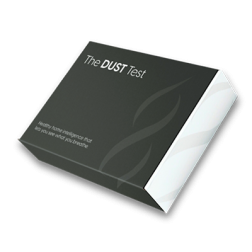
The Dust Test
The Dust Test is a comprehensive at-home test that helps you identify mold and toxins...
-
$274.00 SHOP NOW -
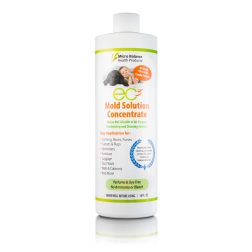
EC3 Mold Solution Concentrate
Micro Balance EC3 Mold Solution Concentrate is a natural botanical that removes mold spores, bacteria,...
-
$33.00 SHOP NOW -
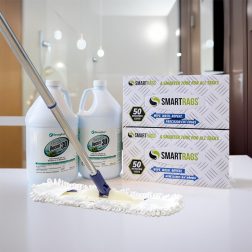
HomeCleanse Cleaning
Take your cleaning to the next level buying all the tools we use to keep...
-
$299.00 – $549.00 SHOP NOW -
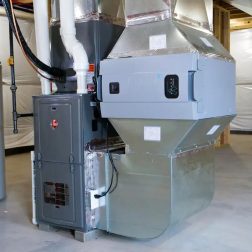
Intellipure SuperV Whole House Air Purifier
Turn your HVAC into a filtration system, removing 99% of ultrafine particles including airborne mold,...
-
$2,000.00 – $2,995.00 SHOP NOW -
Sale
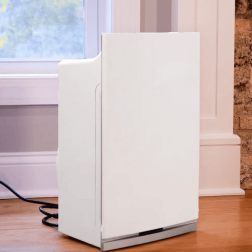
Intellipure Compact Air Purifier
Small in size, but delivers powerful results, reducing airborne microorganisms like mold, viruses, and bacteria.
-
Original price was: $549.00.$199.00Current price is: $199.00. SHOP NOW -
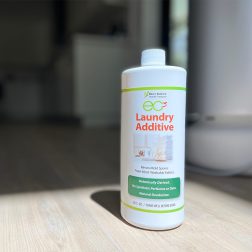
EC3 Laundry Additive
Add EC3 to every rinse cycle to rinse away mold, bacteria and musty odors from...
-
$23.00 SHOP NOW
